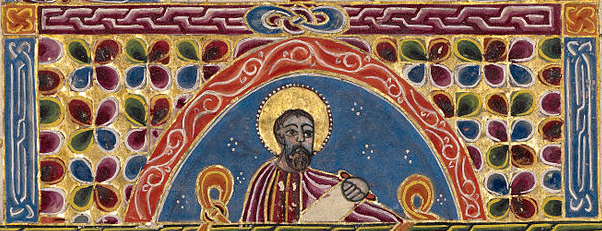
The most fascinating, thrilling and challenging story in the world is that of Jesus as it is recorded in the four canonical Gospels of the New Testament. Without the Gospels we would know precious little about the way Jesus lived and taught, for these remarkable books are the only extensive and reliable sources we have for the life of Jesus. It is true that we could get a dim outline of Jesus’ life from the letters of the Apostle Paul and fill out a bit more of Jesus’ teaching from the Epistle of James, but it remains clear that without the Gospels we would be hopelessly in the dark when trying to imagine the figure of this One who is the titular Lord of more than a billion people today.
It is no wonder that the study of the Gospels has occupied the best minds of students and scholars, not to speak of the thoughts of vast millions of laypersons who simply read these books for inspiration and information. It is also no wonder that thousands of books have been written to explain the origins of the Gospels, their characteristics, their principal message, and their meaning for today. With so many persons engaged in trying to understand these books and their principal subject, Jesus of Nazareth, the average reader may be overwhelmed by the wide variety of opinion concerning the nature and interpretation of these important works.
The significance of the Gospels and the variety of current opinion regarding them make it incumbent on both the ordinary reader and the dedicated scholar to acquire as much knowledge as possible if he or she wishes to form an accurate portrait of Jesus and, indeed, the very origins of the Christian movement.
Premium Members and Friends of JP must be signed in to view this content.
If you are not a Premium Member or Friend, please consider registering. Prices start at $5/month if paid annually, with other options for monthly and quarterly and more: Sign Up For Premium
- [1] Another scholar who has more recently used the antique term “evangel” is Peter J. Tomson, “The Core of Jesus’ Evangel ΕΥΑΓΓΕΛΙΣΘΑΙ ΠΤΩΧΟΙΣ (ISA 61),” in The Scriptures in the Gospels (C. M. Tuckett ed.; Leuven: Leuven University Press, 1997), 674-658. —JP ↩
- [2] See Robert L. Lindsey, “My Search for the Synoptic Problem’s Solution (1959-1969),” under the subheading “A ‘Re-write Man.’” ↩
- [3] For evidence of a Hebrew source behind the Greek text of the Synoptic Gospels, see Robert L. Lindsey, “Introduction to A Hebrew Translation of the Gospel of Mark.” ↩
- [4] I am indebted to David Bivin for this suggestion. ↩
- [5] For a fuller discussion of this example, see Robert L. Lindsey, “Introduction to A Hebrew Translation of the Gospel of Mark,” under the subheading, “Sources of the Markan Pick-ups.” ↩
- [6] See Joshua N. Tilton and David N. Bivin, “LOY Excursus: Catalog of Markan Stereotypes and Possible Markan Pick-ups . —JP ↩
- [7] Perhaps it was also Mark’s close relationship with the Aramaic targumists that induced him to insert a number of Aramaic words in his version of certain sayings of Jesus where Matthew and Luke do not have them. ↩
- [8] For a discussion of the Gospel of John and the sources used by the author of the Fourth Gospel, see David Flusser, "The Gospel of John’s Jewish-Christian Source." —JP ↩


![Robert L. Lindsey [1917-1995]](https://www.jerusalemperspective.com/wp-content/uploads/userphoto/28.jpg)
